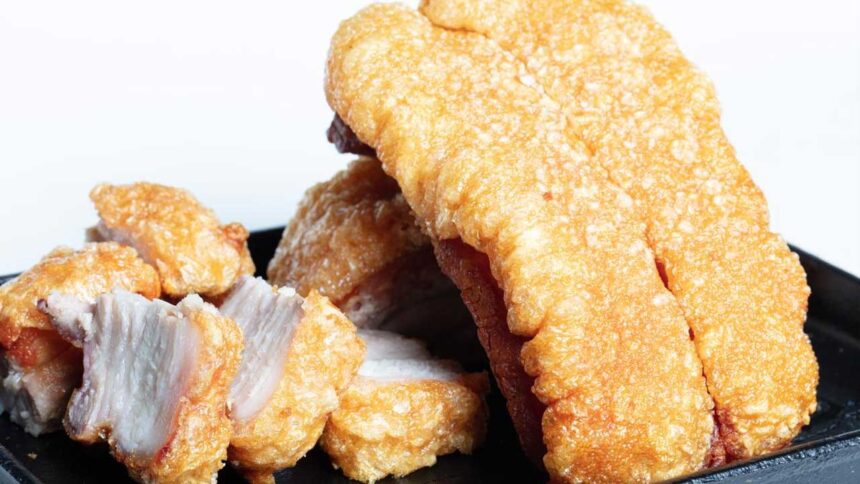Unless you’re living in the middle of the desert, there’s a good chance that the natural habitat around your home is abundantly stocked with wild foods just waiting to be harvested. Here’s a look at Foraging for Wild Edibles – Learn about the most popular foods you can look for.
What is foraging?
Foraging is going out into the “wild” to gather available food. By “wild,” it should be emphasized that it can also mean your backyard:
- Weeds in your garden
- The forest behind your house
- Natural areas around the nearest lake or river
You may have heard the term “hunter-gatherer,” describing many Native people who live on various lands. Most Indians spent much of their days hunting big game if available, trapping and fishing for others—Small animals, and gathering fresh seasonal foods in their immediate surroundings.
Still, other tribes followed their food as the seasons changed, moving closer to areas where game and vegetation were more abundant year-round.
Today, the types of food people seek depend on their tastes, temperament, and availability in their natural environment.
In the US, many people eat various natural foods; nuts, seeds, fruits, berries, roots, vegetables, mushrooms, and other medicinal plants and herbs.
Foraging books
Foraging for wild edibles isn’t difficult, but it can be scary if you don’t know what you’re doing. Here are some books to help you get comfortable.
Wild Edible Foraging – The Most Popular Foods to Forage
Here is a quick list of the most popular foods to forage.
1. Flowers
One thing to remember about flowers is that the pollen can sometimes take away their flavor and even trigger an allergic reaction in some people.
Before eating, you may want to remove the pistils and stamens, leaving only the petals. Also, introduce them into your diet gradually to avoid exacerbating your allergies.
It is best to eat flowers that you have grown yourself so you know what soil they have grown in and what if anything, has been sprayed on them. Flowers purchased from a florist or nursery may be unsafe to eat because they have been treated with pesticides or other chemicals.
Similarly, don’t eat flowers by the roadside or those picked in public parks. They may have been treated with pesticides or herbicides. Flowers on the side of the road will have been contaminated by car exhaust—And other carcinogenic contaminants.
There are dozens of flowers you can eat. Some of the most common flowers and buds include all varieties of pumpkin, chamomile, citrus, coriander, hibiscus, jasmine, mint, rose, rosemary, and violets.
They can also be added to salads and desserts to give them color, fragrance, and fantasy.
You can keep the flowers fresh by placing them on dampened paper towels in a covered, airtight container and refrigerating them for up to 10 days. If your flowers are getting weak, you can also revitalize them with ice water.
2. Nuts and Seeds
Nuts are technically the hard fruits of a tree or shrub. They have different seasons when they can be found. Seeds are also found only in the post-harvest season when plants are allowed to prepare for replication. All seeds are found in the fruits or pods of a plant, and some are very tasty.
In late summer and fall, some of the most common nuts and seeds for forage include:
- Beechnut
- Hazelnut
- Pinion
- Nut
- Poppies
- Sunflower
- Acorns
Acorns, however, require a fair amount of soaking and preparation to remove tannins before eating or flouring them. Consult with a local guide or network with other collectors to learn the tricks of the trade.
3. Berries and fruits
Berries and fruits are easy to find because they are usually large and colorful.
Everything from blackberries to ground cherries is free. I recommend following local foraging groups in your area so you can keep up with the seasons and know what’s available. That way, you’ll be able to get out and pick up food before birds and other animals.
When foraging for food, always leave enough for the local wildlife.
Some of the most popular fruits and berries to harvest include:
- Blackberry
- Rose hips
- Sauce strike
- Wild strawberries
- Blackberries
- Hawthorn berries
- Wild apples
- Wild pears
- Wild plums
- Much more
4. Greens
There are a variety of green leafy plants that taste great fresh in salads or cooked and added to stir-fries and stews.
Some of the more common green leafy plants include:
- Lamb quarters
- Dandelion leaves
- Banana
- Chicory
- Wild lettuce
- Clover
- Nettles
- Wood sorrel
- Sheep sorrel
- Burdock
- Arrowroot
5. Roots and bulbs
Some common wild roots and bulbs include wild carrots and other foods such as wild onion, leek, daylilies, Queen Anne’s lace, and potatoes.
All these foods are buried underground and out of sight, so you must know what the leaves and flowers look like on the surface to find them!
Some medicinal roots, such as valerian, are also used to treat mood disorders and help with insomnia.
6.Mushrooms
Edible mushrooms can be a great addition to any diet. Hundreds of wild mushrooms are edible, but many others can make you seriously ill or even kill you, so make sure you never pick or eat a mushroom that you are not 100% sure you have correctly identified.
Some mushrooms can be found year-round, but most are more readily found in many geographic areas in the wet seasons, late winter, or early spring.
For example, the best time to hunt for mushrooms in the Pacific Northwest is between November and February. In other climates, the mushroom hunting season may start later and continue into April and May.
Some of the most common edible mushrooms (and the ones you’ll see mushroom hunters brag about the most when they bring home a large quantity) are:
- Morels
- Puffballs
- Oyster mushrooms
- Chanterelles
- Tickets
- Chicken mushrooms
7. Medicinal Plants
Due to their nutrient-dense properties, many of the aforementioned wild foods are also potent medicinal plants with specific properties that heal and alleviate various ailments.
These medicinal plants and weeds, with their leaves, flowers, roots, and seeds, can be eaten raw, cooked, steeped in tea, brewed, pressed for oil, and made into tinctures. Volumes and volumes have been written on the simple benefits of herbal medicines. Consult an herbalist, or read, research, and experiment before indulging in wild plants.
Some plants are dangerous if consumed in large amounts but can be used to treat intestinal parasites or as an expectorant if used in small amounts.
Some of the more notable (and safer) wild weeds with medicinal properties include:
- Mallo
- Mullein
- Bee balm
- Black seed
- Korean mint
- Alfalfa, catnip
- St. John’s wart
- Cannabis
- Sage
- Green thread
- Lemon balm
- And hundreds of other plants
No matter your taste or climate, wild natural foods are available for harvesting. I recommend partnering with other experienced harvesters to learn which plants are safe and which to avoid.
Also, invest in detailed field guides to help you identify plants in the wild. If you’re planning a day trip or hike, invest in a small first aid kit and learn the plants that can be used as irritating plant antidotes, Like poison oak, poison ivy, and stinging nettles (Jewel Weed, by the way) in the first place. With practice, it gets easier.
Once you know what’s safe and what’s not, you can share that knowledge with others and encourage people to eat from the wild abundance surrounding us.










